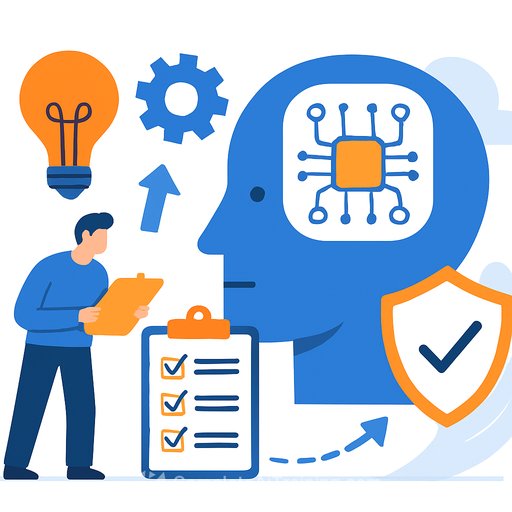From Generic Code to Specialist AI: How MCP Will Reshape the Developer Experience
Most code from LLMs is average by design. Useful, but bland. Model Context Protocol (MCP) changes that by giving AI direct access to specialist tools through well-defined capabilities. The result is code creation guided by policy, security, and feedback loops-not guesswork.
What MCP Is, in Plain Terms
MCP lets tools expose functions to an AI model through secure APIs. The model can discover, call, and coordinate those functions within your policies.
- Capability registration: Tools publish what they can do with clear input/output schemas (SCA, SAST, DAST, test runners, refactoring, linters, build systems, ticketing, and more).
- Discovery and selection: The AI sees an indexed catalog with parameters, cost, and scope, then picks the right functions for the task.
- Policy and permissions: Calls honor org rules, data scopes, and audits. Sensitive actions require consent and elevated roles.
- Invocation and streaming: The AI composes calls, often in parallel, streams intermediate results, and adapts based on outputs (e.g., SAST flags an issue, propose a refactor, rerun tests).
- Observability and feedback: Every call is recorded. Results feed future prompts and org analytics.
- Decoupled runtime: Tools can run local, in a VPC, or as SaaS. MCP is vendor-neutral and swappable.
In short, MCP turns the model into a workflow orchestrator that leverages your specialist stack inside the loop.
Echoes of Past Shifts
Software has moved forward whenever workflows were unified:
- IDEs: Editing, compiling, and debugging moved into one interface.
- Git and GitHub: Collaboration became distributed and default.
- DevOps and CI/CD: Testing, builds, and deployments stitched together.
These weren't just conveniences. They made better practice the path of least resistance. MCP applies the same pressure-this time to discipline itself.
The Best Practices We Know Work
- SCA: Know what's in your code.
- SAST/DAST: Catch flaws before attackers do.
- Unit and integration tests: Prove correctness at every level.
- Refactoring and linters: Enforce readability, maintainability, and style.
The gap is consistency. Some teams follow the playbook; others skip steps. Quality varies by person, project, and deadline.
MCP as the Normalizer
By wiring these capabilities into the AI loop, consistent practice becomes the default. Every AI-assisted code path runs SCA, SAST/DAST, tests, and linters automatically. The assistant becomes the interface, and the interface enforces the guardrails.
This levels the field across teams and seniority. Good process stops depending on individual habits and starts depending on the pipeline.
Five-Year Outlook for the Developer Experience
- SCA as default: Every suggested dependency is scanned for vulnerabilities and licenses before it enters a repo.
- SAST/DAST always on: Static and dynamic checks run as code is generated, flagging insecure patterns early.
- Testing built-in: The assistant writes, runs, and validates tests. Code without passing tests doesn't surface.
- Style and maintenance by design: Proposals are linted and refactored to your standards before you see them.
From the developer's seat, it feels like a conversation. Under the hood, decades of practice fire on every change.
How to Start (Practical Steps for Dev, IT, and Leadership)
- Inventory capabilities: List your SCA, SAST/DAST, testing, build, and release tools. Note ownership, environments, and APIs.
- Define policies: Decide which actions require consent, which data can flow where, and who can call what.
- Pick a pilot: Start with one service and a limited set of capabilities (e.g., SCA + unit tests). Measure defects, lead time, and rework.
- Wire observability: Log every call, result, and timing. Feed outcomes into prompts and dashboards.
- Iterate the loop: Add linters, SAST, then DAST. Expand to refactoring and change-risk checks. Tighten policies as you scale.
Metrics to Watch
- Vulnerability introduction rate per PR
- Time from proposal to merge under guardrails
- Test coverage and flake rate
- Rework after security and QA review
- Mean time to fix security findings
Risks and Guardrails
- Permission creep: Enforce least privilege for each capability and environment.
- Cost blowups: Cap concurrent calls, cache results, and sample long-running scans.
- Vendor lock-in: Favor MCP-compatible tools and keep the contract at the protocol level.
- Data exposure: Scope secrets, scrub logs, and isolate sensitive repos and environments.
- False confidence: Track misses and near-misses; feed them back into prompts and policies.
If IDEs unified development and DevOps unified delivery, MCP can unify discipline. Not by slogans, but through APIs, policies, and feedback loops that make good practice automatic.
Learn more about MCP from the source here: Model Context Protocol. For security practice definitions and guidance, see OWASP.
If you want structured upskilling for teams building with AI-assisted code, explore our resources: AI Certification for Coding.
Your membership also unlocks:






